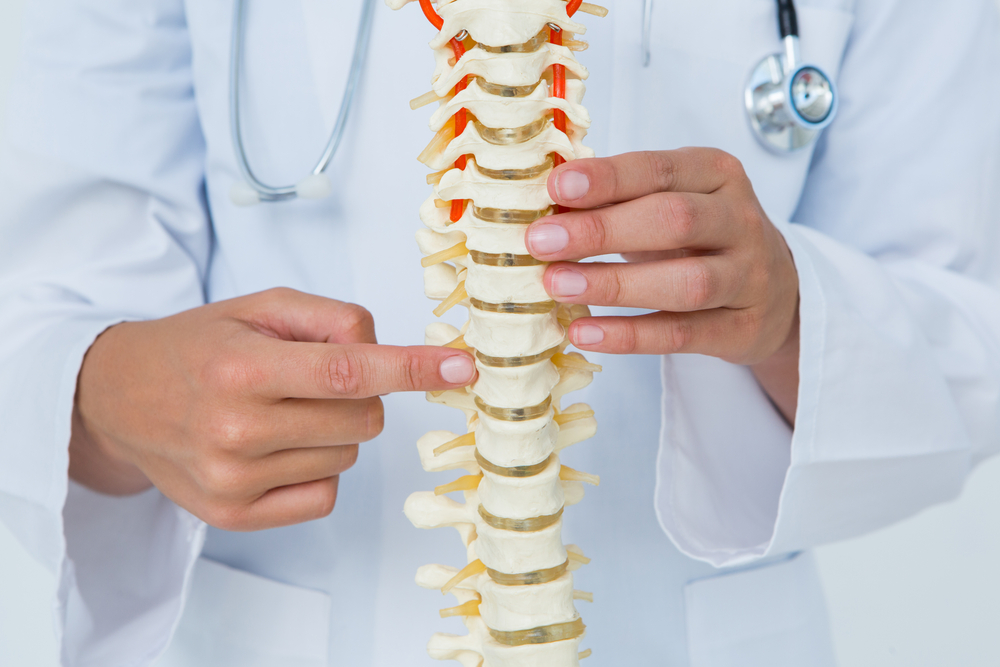The term “spinal stenosis” is used to describe a condition in which the spinal canal becomes narrowed. This condition causes pressure on the spinal cord, as well as on the nerves that affect the legs and arms. It typically manifests in the neck (cervical) and in the low back (lumbar). Each of these forms may be characterized by different symptoms, and each form may also require different types of treatment.
If you have experienced any of the symptoms associated with this condition, consulting a professional is advisable. Getting treatment as soon as possible may help to alleviate pain and other discomfort.
Spinal Stenosis of the Neck
When the condition manifests in the neck, it is referred to as cervical spinal stenosis; this manifestation is not as common as it is in the lumbar region. However, this variation of the condition may cause more severe symptoms than the type that occurs in the lower back. When the nerves and the upper part of the neck become compressed, the condition is known as cervical spinal stenosis. This can lead to spinal cord compression, which may result in very painful symptoms.
Spinal Stenosis of the Lower Back
As previously mentioned, when the condition manifests in the low back, it is called lumbar spinal stenosis, and it is more common than the cervical kind. This condition affects the largest components of the vertebral column that are movable. The low back version is sometimes associated with sciatica, and it involves the spinal nerve roots in the low back being choked. The symptoms of this condition may occur over time.
Causes
This spinal issue may be caused by a variety of factors. Age is one of the top factors that may lead to this condition. As the discs between the vertebrae deteriorate with time, the spaces in the spine may become narrower. A person who has arthritis or osteoporosis may begin to notice signs of this spinal condition. Those who suffer from the symptoms of spinal stenosis may also be genetically predisposed to developing it. A spine that is unstable or that has tumors could manifest the symptoms of condition, and a spine that has sustained a trauma may also develop the condition. An individual who has bone spurs or a bulging or herniated disc could suffer from spinal stenosis, as well.
Symptoms
An assortment of symptoms may be associated with this spinal condition. The symptoms may come and go intermittently, and they could be more noticeable during periods of activity. Activities such as walking, bicycling, or standing in an upright position might exacerbate the condition. The symptoms of this condition may include weakness, numbness, discomfort in the knee area, discomfort in the thigh and buttock area, and pain in the lower back or the neck. Neurological disorders or a past that involves carcinoma can also cause the symptoms of spinal stenosis to manifest. Other symptoms can include pain during the night, fever, structural abnormality, and discomfort while walking. A person who suffers from this issue may also lose weight for no discernible reason or experience intense pain while lying down.
Diagnosis
Various approaches may be taken to determine whether a patient has spinal stenosis. A patient will need to undergo a physical examination, and the patient’s medical history should be considered. Certain tests may be taken, including an X-ray and an MRI. A bone scan, CAT scan, or myelogram may also be deemed necessary in order to identify the condition.
Treatment
Spinal stenosis may be managed with an array of treatment strategies. NSAID medications (such as ibuprofen or aspirin) or an analgesic (such as acetaminophen) may be recommended. Anesthetic or corticosteroid injections might be administered.
A health care professional may suggest that activity be limited until the condition becomes more manageable, and a corset or lumbar brace might be worn. Physical therapy and specific exercises may also be a part of the treatment process. Acupuncture or chiropractic treatment may be recommended, and in some cases, surgery may be considered as a viable option.
Spinal stenosis may seem overwhelming for a person who has not yet been diagnosed. However, the symptoms of this condition are generally manageable. Consulting a qualified professional is the first step in treating this condition of the spine.


Recent Comments